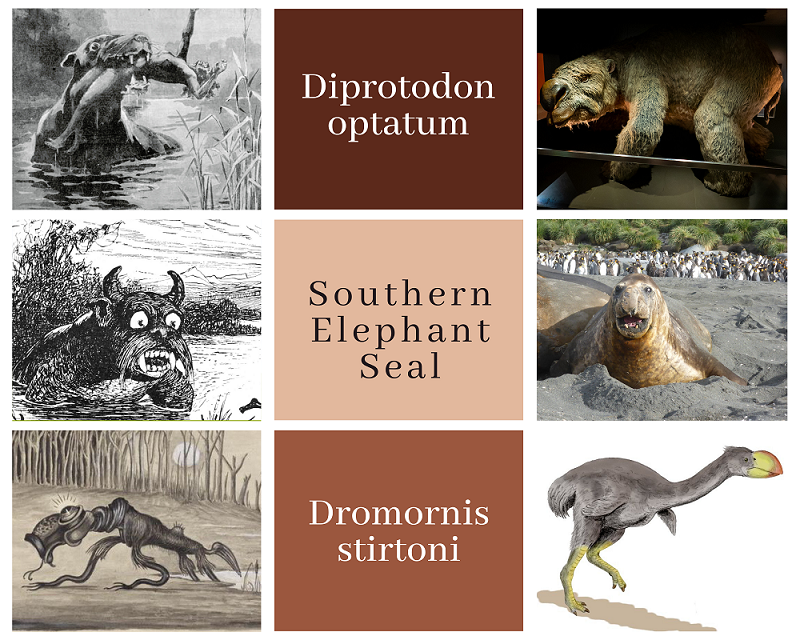The Bunyip
“On the bone being shown to an intelligent black, he at once recognised it as belonging to the bunyip, which he declared he had seen.” - The Geelong Advertiser, 1845
The sun shone on Poltpalingada’s back. He was fishing. After a good catch, he decided to try for more. He had known the laws of the Ngarrindjeri people. You fish what you need and no more. The Elders turned him into a Mulyawonk – half fish and half man, and so he lived forever in the river.
This is the origin story of the Bunyip in the Murray River area. The creature is known from many waterways in Australia. In Victoria, it is often described as a seal-like creature, some 2m long, with a bulldog-esque head and shaggy dark fur. In Queensland, they know it as 4m in length, with an emu-like head and long neck. It is always amphibious, nocturnal, and has a loud, scary roar.
Early European settlers thought it to be a yet undiscovered animal, and there were many sightings in 1840-1860. I’ll put my support behind three hypotheses:
- Diprotodon optatum – an extinct megafauna some 3m long. Its closest surviving relative is the wombat. Indigenous Australians have routinely identified Diprotodon bones as bunyips.
- Southern Elephant Seal – the males of this seal species weigh up to 4,000kg and can grow to 6m in length. They are known to hunt in complete darkness. And while they are rarely seen this far above Arctic waters, a report from 1933 suggests it happened on occasion.
- Dromornis stirtoni – a flightless megafauna bird, 2.5m tall. Its bones fit the description of the Queensland bunyip well, and this is also where most fossils have been found.

